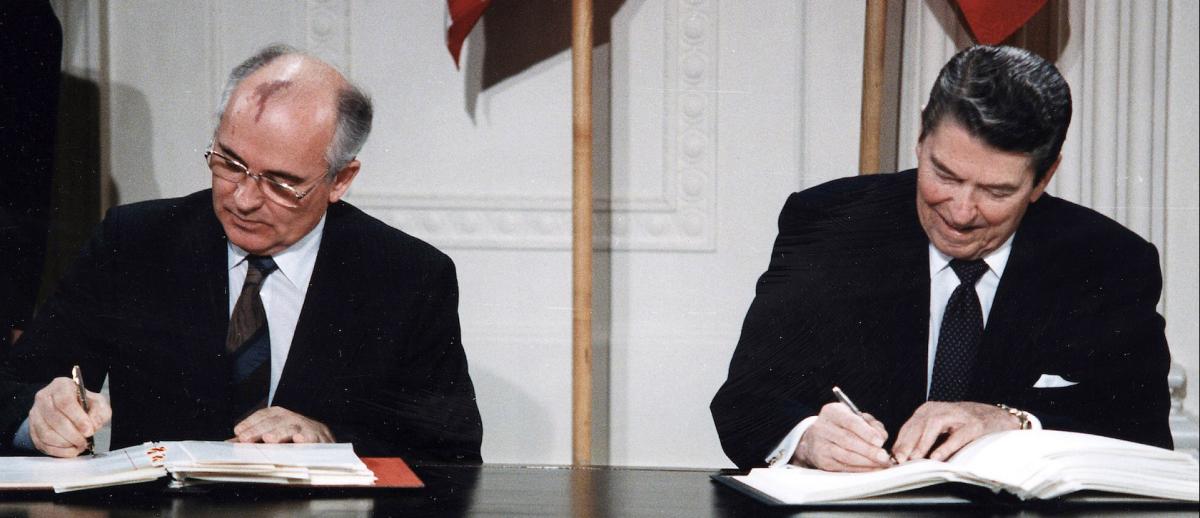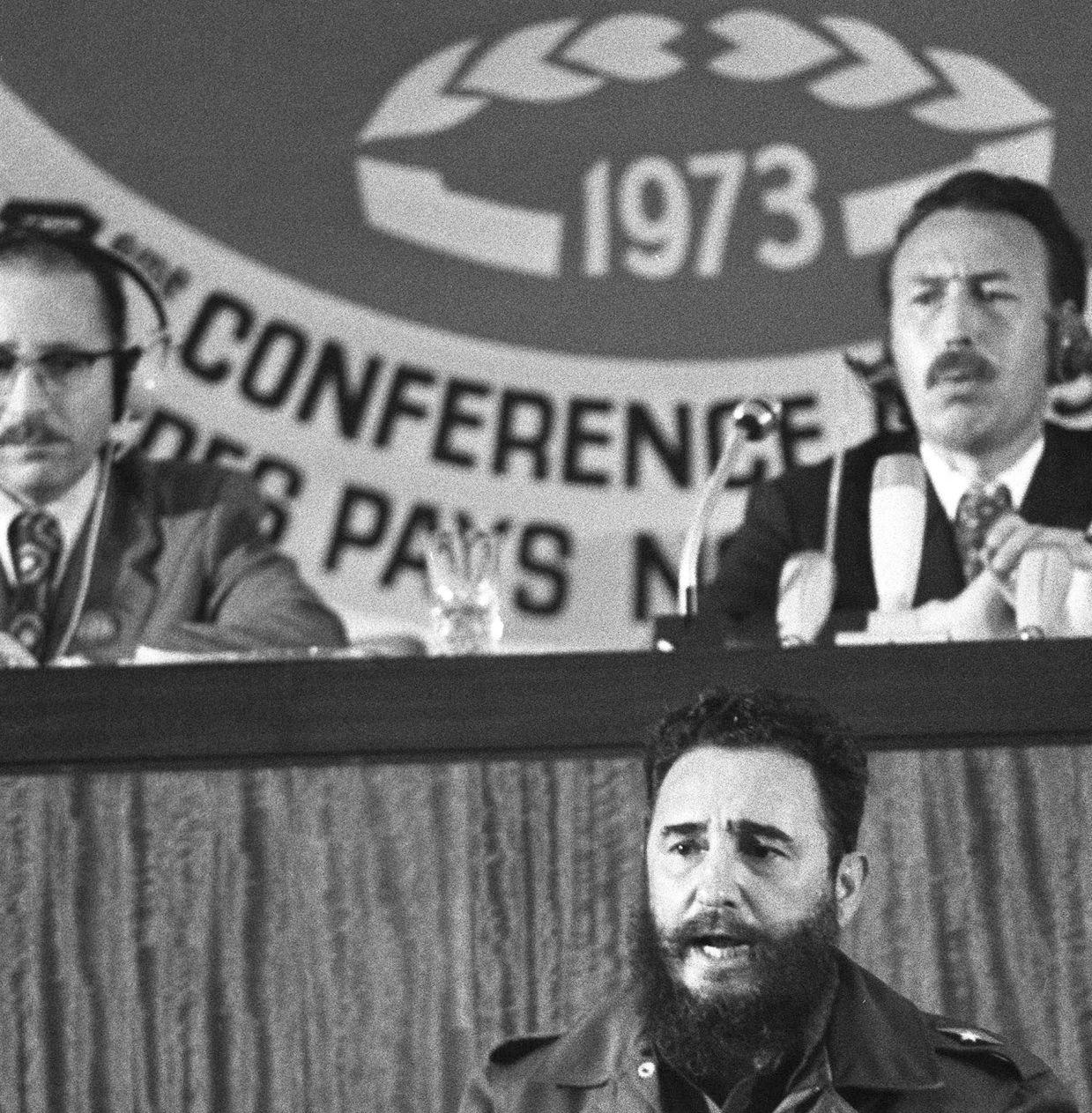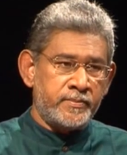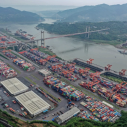The Cold War Continues
archive


US President Reagan and Soviet General Secretary Gorbachev signing the Intermediate Range Nuclear Forces (INF) Treaty in the East Room of the White House, December 8, 1987.
The Cold War Continues
What is unfolding today is not the New Cold War. The New Cold War was during the Reagan years, in the 1980s, as critically elaborated most notably by Noam Chomsky and Fred Halliday in their published books of that decade. So, what is happening currently has to be the New, New Cold War, or Cold War 3. Or has there been a Long Cold War at least since 1917, a century of Cold War, a single Protracted Cold War, within which there have been short periods of partial relaxation and stabilization? The strategic moves we see today—political, military and economic—when taken together, seem to suggest that the goal and objective of the West is to initiate the endgame of the Long Cold War and to win it, imposing a zero-sum outcome. What was thought to be its end with the collapse of the USSR and unilateral retrenchment of Russia did not amount to the sustainable victory that the West thought it would be. It now appears that a final gamble on the military advantage of the West has inspired a drive that goes beyond "containment" to one of active encirclement and "roll back" (to use a hawkish concept which had a short shelf-life in the 1950s). US policy is intended to wrest and retain the global strategic initiative at this time, in a project to reverse and shift the correlation of forces on a world scale so as to prevail in establishing what it would call "world leadership."
It is a mistake to assume this is decisively to do with President Trump, one way or another. It didn’t really have much to do with President Reagan, as it turned out. Had it been up to the latter, the deep cuts of nuclear weapons would have taken place in Reykjavik in 1986, but that didn’t happen. That was a warning sign of the determinant drivers of the system, but nobody really wanted to read it. The failure to sign the agreement, which would have ended the logic of the Cold War, and which President Reagan himself was inclined to, was the best evidence of the West’s ultimate Cold War goals. The intention of the Soviet side in 1986 was to end the Cold War, but the intention of the Western side was not merely to end it even on favorable terms, but to win it.
The West sought to assert unipolarity in two different modes. The neoconservatives sought to reassert unipolarity through unilateralism, while the neoliberals strove to reassert unipolarity by coupling it with multilateralism—examples being the manipulation and bypassing of the UN in the Kosovo war of 1999, the doctrine of the Responsibility to Protect using the UN system as instrument, and the expanded intervention in Libya. Both strategies were offensive ones, which unraveled the Yalta and Potsdam arrangements and pushed NATO to the borders of Russia. There was no effort to accommodate and manage a transition to multipolarity on the part of either the neoliberals or the neoconservatives.
It is important to understand that on the question of unipolar hegemony, the liberals and conservatives in the West are on a continuum. When the ‘correlation of world forces’ in the post-Vietnam, post-Angola period was running against the West, it is a liberal administration of a sincere President, Jimmy Carter, which ideologically weaponized Human Rights, declared the Persian Gulf as an area vital to the core interests of the US, initiated the Rapid Deployment Force, and above all, acted to create a quagmire which would draw the USSR into Afghanistan. In other words, the Brzezinski project of going on the counteroffensive began under a liberal Democrat, even before the Reagan presidency.
Attention must shift to an analysis of the driving force behind global events and big power relations today. If President Carter’s Presidency saw the US shifting to the counter-offensive, what was the reason? President Reagan stopped short of signing a breakthrough agreement at Reykjavik. Why was that? If President Trump is opposed to war, what drives US militarism? Is it merely “the hawks” in every US administration? If so, how to define and distinguish them, and what makes them hawkish when in office? Is it the Deep State? Or is it that the “hawks” or the “deep state” are merely the agencies or bearers of something else, something more systemic?

US President Jimmy Carter and National Security Advisor Zbigniew Brzezinski.
The driving force is not based on presidents’ intentions, the influence of hawks and doves, nor the “deep state,” but the underlying and material matrix that is imperialism as a system—of which the deep state, the hawks and doves, the neoconservatives and the neoliberals, are superstructures, "bearers" and epiphenomena.
A prophet of our time foretold all this as far back as 1973, with great lucidity. Rejecting the theory articulated Libya’s Muammar Gaddafi at the Non-Aligned Summit Conference in Algeria, of equating the “two superpowers,” both of which should be opposed by the Nonaligned Movement, Fidel Castro made the following prediction:
With the anguishing and increasing needs for power resources and raw materials which the capitalist and developed countries are experiencing to maintain the absurd consumer societies they have created, if the extraordinary restraining power represented by the socialist movement did not exist, imperialism would parcel out the world, humanity would suffer the scourge of new wars and many of the independent countries which today form this movement would not even exist. In high U.S. Government circles, there are even now those who openly advocate armed intervention in the Middle East should U.S. oil requirements so demand.

Fidel Castro, Fourth Summit Conference Of Non-Aligned States. Algiers, 1973. (Source: Getty Images)
What we see today is the working out of Fidel’s prediction, deriving from his grasp of the theory and historical practice of imperialism as a world-system: how it would return to its original predatory character in the intertwined and interactive economic and military realms; how it would revive its habit of carving and re-carving out the world through military means, without the restraining factor of the USSR and the socialist camp if it were neutralized or removed.
To be reminded of this is to be able to put everything into perspective. Why is the US moving on all fronts against China when, just a few years ago, its strategists and policy intellectuals were patting themselves on the back for having guaranteed that the Crash of 2008 did not turn into a Great Depression precisely because China had been incorporated into the world economy? Why is the plaintive hope that the absence of an ideological dimension to the competition between the US, Russia, and China should restore harmonious dialogue, essentially utopian?
The answer is that for imperialism as a system, contradictions and wars were not primarily generated by reasons of ideology, and therefore the warlike character of imperialism could not be abolished or neutralized by the absence of the clash of ideologies. Applied to the contemporary world, it would mean that the absence of a systemic and ideological clash between the West and core Eurasian states, and indeed the incorporation and participation of the Eurasian core states in a single world (capitalist) economy, in no way attenuates the drive towards war of imperialism and prevents the possibility of war in general.
The strategic moves we see today... when taken together, seem to suggest that the goal and objective of the West is to initiate the endgame of the Long Cold War and to win it, imposing a zero-sum outcome.
Thus, the West catches the Eurasian core states in a pincer. On the one hand, the latter states become targets as rival powers, economic and politico-military, within the same system. On the other hand, a new clash of ideologies and even of systems is constructed simply by re-defining the issue as one of “freedom/free markets” versus “unfree/authoritarian/statist” regimes or systems. For their part, having unilaterally renounced a clash of ideologies, not to mention systems, the Eurasian states have retrenched from the ability to project soft power into the societies of the West, winning over young people and the intelligentsia, as they did, during the Cold War.
At least one answer to the "master-question" of Chernyshevsky and Lenin, namely, “What is to be done?” seems to be a move towards some form of United Front and some type of politico-strategic unity of the Eurasian core states. At present, the Eurasian core states are operating with a "concert of nations" approach; a multipolar model which contains the danger of keeping open gaps through which an adversary can encircle and dominate or threaten each Eurasian core state at a time.
Today, objectively and concretely, there is no choice as between "unipolarity" and "multipolarity." A degree of multipolarity exists but it is not sufficient to halt, still less reverse a purposive drive for the restoration of unipolar hegemony. The only thing that can counterbalance the unipolar project is a United Front amounting to what is commonly termed a “new bipolarity.” The "new bipolarity" and "multipolarity" are neither choices nor polar opposites. Indeed, a new bipolarity is the necessary intermediate form of the more or less long historical transition to a new multipolarity. Unipolarity is the thesis, while multipolarity is not the antithesis; a new bipolarity is. Multipolarity is the synthesis which can be reached only via the new bipolarity. As I said earlier, multipolarity and bipolarity must not be understood as choices or polar opposites. Indeed, one may envisage the multipolar within the bipolar, which is the precise sense in which Palomiro Togliatti used the concept “Polycentrism” in the 1950s—as a polycentric camp, polycentrism within the camp, not the abolition of the two camps and the demarcation between them.
_________
This essay is adapted from the author’s "Endgame of the Long Cold War,” an article published by the Russian International Affairs Council on June 21, 2019.
Noam Chomsky, 1982. Towards a New Cold War: Essays on the Current Crisis and How We Got There. New York: Pantheon.
Fred Halliday, 1983. The Making of the Second cold War. London: Verso.



